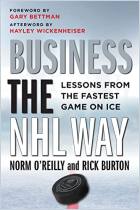
Money Games
Profiting from the Convergence of Sports and Entertainment
Read or listen offline
Recommendation
Whether you’re playing in a neighborhood softball game, watching the Super Bowl, or lining up a putt on your video game console, separating sports and entertainment is impossible. As technology becomes increasingly sophisticated and presents the American sports consumer with exciting new options, the business relationship between sports and entertainment in the US takes on added significance. David M. Carter, a professor of sports business, has compiled an exhaustive study tracing the development of the multibillion-dollar sports entertainment industry, from televised major league games to video gaming. Carter’s painstaking research makes the book ideal as an academic resource. While it requires more than a passing interest in American sports (if you don’t know a touchdown from a slam dunk, this may not be for you), getAbstract recommends Carter’s work, though his obsession with detail can detract from the narrative flow. Whether you are an industry insider or an interested outsider, Carter helps you follow the money and keep your eye on the ball.
Take-Aways
About the Author
David M. Carter executive director of the University of Southern California’s Sports Business Institute and professor of sports business at USC’s Marshall School of Business.




















Comment on this summary or 开始讨论